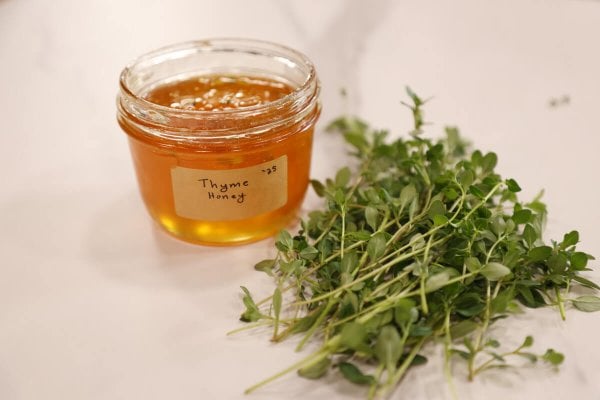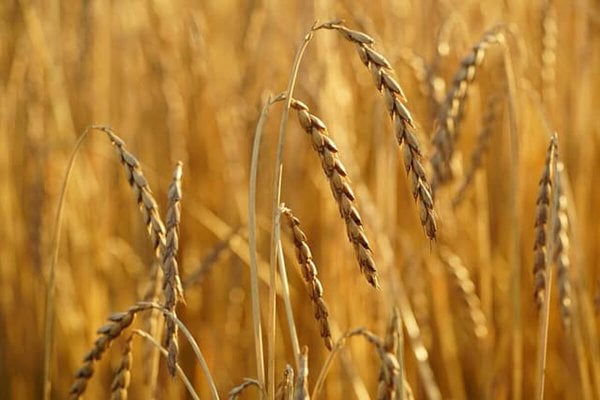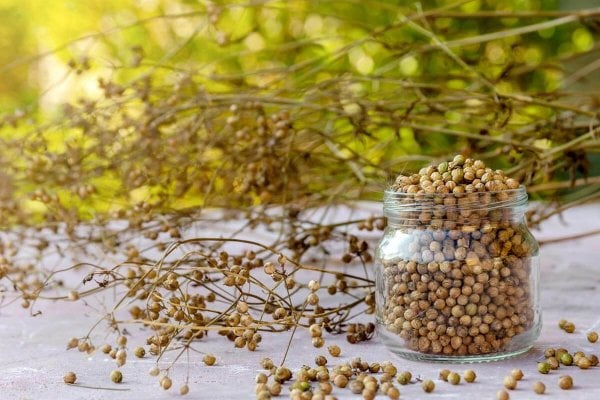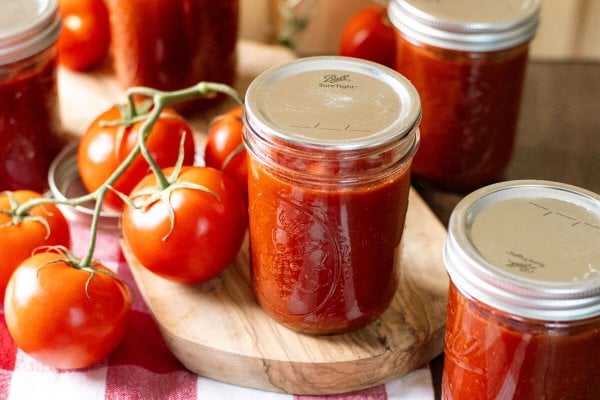Storing water long term is a crucial part of emergency preparedness. Whether you’re facing a natural disaster or simply want to have a reliable water supply in case of an unexpected water shortage, knowing how to store water properly is essential.

We’ve discussed rainwater collection methods on the homestead, how to be prepared for emergencies, planning and preparedness for the unknown, and even how to build up a well-stocked pantry. All these topics go hand-in-hand with how to store water long-term.
The immediate thought should go for all the people in your house, but if you have livestock, you must consider their needs as well. We are very fortunate to have our own water supply on our homestead. If needed, we could collect and boil that water to keep our family and animals healthy in case of an emergency.
However, we realize not everyone has water access and it’s smart to have some drinkable water on hand just in case. In this guide I will share with you the key steps and considerations for storing water long term, ensuring that you have access to clean and safe water whenever you need it.
Key Takeaways:
- Proper water storage is essential for emergency preparedness.
- Storing water long term ensures a reliable water supply.
- Follow the recommended guidelines for choosing containers for water storage.
- Disinfection methods are crucial to maintain the safety of stored water.
- Consider storage conditions and rotation to keep the water fresh.
How Much Water to Store?
You may be wondering just how much water you should store for an emergency. The CDC has some basic guidelines, however, everyone’s situation is unique, so keep that in mind when planning your water storage.
- Store at least 1 gallon of water per person per day for three days for drinking and sanitation.
- Try to store a 2-week supply if possible.
- Consider storing more water than this for pregnant women, people who are sick, pets, or living in a hot climate.
Types of Containers for Long-Term Water Storage
When it comes to long-term water storage, choosing the right container is crucial. There are several types of containers available, each with its own advantages and considerations. Let’s explore some of the most common options:
1. Food Grade Plastic Containers
Food grade plastic containers, such as those made from high-density polyethylene (HDPE), are a popular choice for long-term water storage. These containers are durable, lightweight, and resistant to chemicals. Look for containers labeled as “food grade” or “safe for potable water” to ensure they meet appropriate standards.
| Type of Plastic | Advantages | Considerations |
|---|---|---|
| HDPE (High-Density Polyethylene) | Durable, lightweight, resistant to chemicals | Avoid containers with BPA or other harmful additives |
| LDPE (Low-Density Polyethylene) | Flexible, resistant to impact | Not as durable as HDPE, may be less suitable for long-term storage |
2. Glass Containers
Glass containers are another option for long-term water storage and our preferred method. They are non-reactive and do not leach any chemicals into the water, making them a safe choice.
However, glass containers can be heavy and prone to breakage, so proper care should be taken when handling and storing them. Since stored water is usually something being kept away from the hustle and bustle of our busy children, we haven’t had issues.
3. Stainless Steel Containers
Stainless steel containers are durable, resistant to rust, and do not impart any taste or odor to the water. They are also easy to clean and maintain. However, stainless steel containers can be more expensive and heavier compared to other options.
4. Other Storage Containers
In addition to plastic, glass, and stainless steel containers, there are other options available for long-term water storage. These include ceramic containers, BPA-free water barrels, and collapsible water bags. Consider the specific needs of your storage situation and choose the container that best fits your requirements.
Remember, regardless of the container you choose, it is important to properly clean and sanitize it before storing water. Follow the manufacturer’s instructions or use a diluted household bleach solution to disinfect the container and ensure the stored water remains safe for consumption.
Disinfection Methods and Considerations for Long-Term Water Storage
When it comes to storing water for the long term, proper disinfection is a crucial step to ensure the safety of your water supply. Here are some effective methods and important considerations to keep in mind:
Water Filter
If you’re not sure how clean your water is, consider purchasing a water filtration system. We used a Berkey Water Filter for years before we were on well water.
Boiling
One of the most reliable and straightforward methods of disinfecting water is by boiling it. This is the option I’d recommend as you don’t have to deal with chemicals and ratios.
Simply bring the water to a rolling boil for at least one minute (or three minutes at higher altitudes) to kill bacteria, viruses, and other pathogens that may be present. After boiling, let the water cool down before transferring it to your storage containers.
Chemical Disinfection
If boiling is not feasible, you can use chemical disinfection methods. Chlorine and iodine are commonly available and effective in killing harmful microorganisms. Follow the instructions on the product label carefully to determine the appropriate dosage for disinfecting your water. After adding the disinfectant, let the water sit for at least 30 minutes before using or storing.
Storage Considerations
In addition to disinfection, there are some important considerations for long-term water storage:
- Use food-grade containers: Ensure that the containers you use for storing water are made of food-grade materials to prevent any leaching of harmful substances into the water.
- Keep containers sealed: Properly seal your containers to prevent contamination from dirt, insects, or other foreign particles.
- Store in a cool, dark place: Water is best stored in a cool area away from direct sunlight to minimize the growth of algae and bacteria.
- Rotate your supply: It’s important to periodically rotate your water supply, replacing it with fresh water every six months to a year to ensure the highest quality and freshness.
By following these disinfection methods and storage considerations, you can have peace of mind knowing that your long-term water supply is safe and ready for any emergency or water shortage situation.
Source Links:
- https://www.regionalh2o.org/emergency-preparedness/emergency-water-storage
- https://deq.utah.gov/drinking-water/emergency-water-storage
- https://pubs.nmsu.edu/_m/M116/index.html

More Posts You May Enjoy
- 9 Tips for Emergency Preparedness
- Our Must-Have Homestead Essentials
- Positivity & Preparedness in Uncertain Times
- Planning & Preparedness for the Unknown
- Preparedness Steps for a Rocky 2024
- How to Pivot When Things Go Wrong on the Homestead
- Building Up a Well-Stocked Pantry & Long-Term Food Storage Supply


















